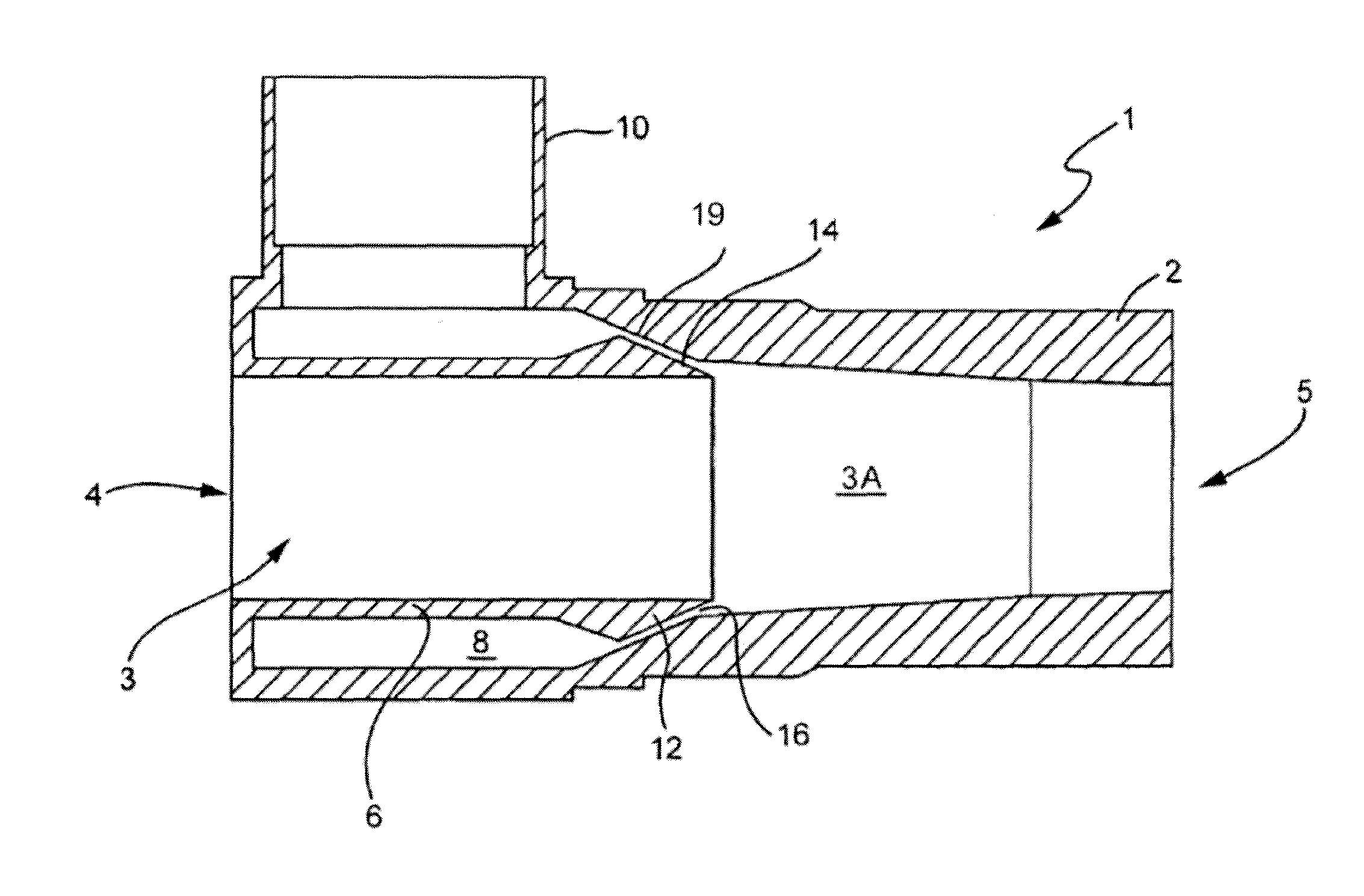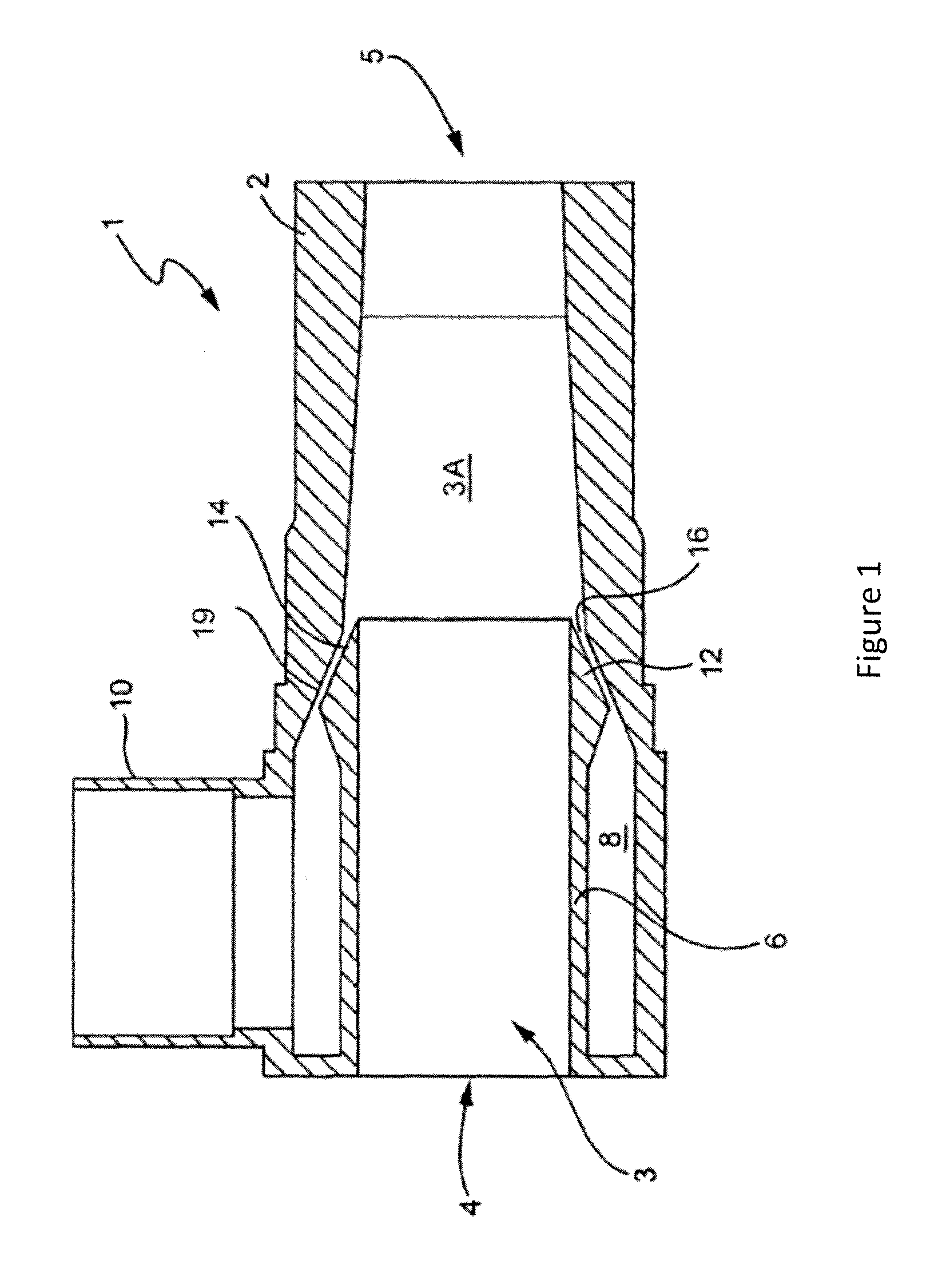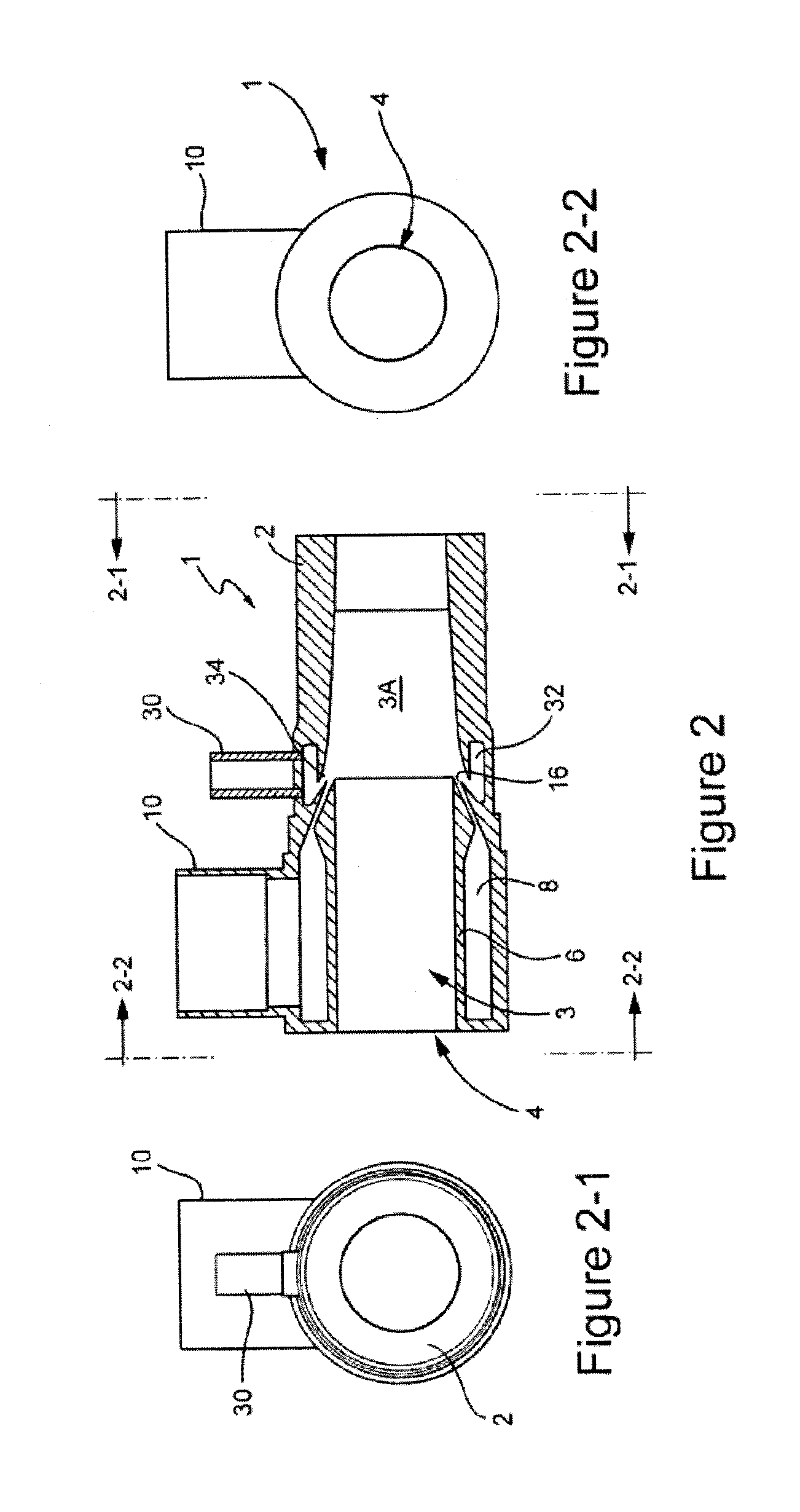Methods and systems for biodegradable waste flow treatment using a transport fluid nozzle
a technology of biodegradable waste and transport fluid, applied in the direction of biological combination treatment, differential sedimentation, solid separation, etc., can solve the problems of slow growth and acclimatization to rapid changes in environment and conditions, unfavorable energy balance and focus in process, and not without problems. , to achieve the effect of positive operational benefit and favorable energy balan
- Summary
- Abstract
- Description
- Claims
- Application Information
AI Technical Summary
Benefits of technology
Problems solved by technology
Method used
Image
Examples
example 1
[0116]A process rig as described in FIG. 1 was used to process four different types of municipal waste sludge. These four sludges were as follows:[0117]Primary Sludge (PS)—fresh settled influent.[0118]WAS (SAS)—waste activated sludge from aerobically digested primary sludge.[0119]TWAS—WAS after thickening with a charged polymer to increase solids.[0120]Digested or Digestate—solids from the end of the anaerobic digestion.
[0121]Materials were obtained from a full scale waste treatment plant (Cotton Valley, Milton Keynes, UK) and were selected to represent standard industry materials. These were provided in volumes of at least one metric ton per process run, and were delivered fresh each time to eliminate settling of solids and unwanted microbial degradation. The sludges were pumped to the process apparatus via a pump suitable for moving viscous product (Positive Displacement, Mohno). The sludges then passed through the desired number of devices (1-3 in this example), before exiting fo...
PUM
| Property | Measurement | Unit |
|---|---|---|
| pressure | aaaaa | aaaaa |
| temperature | aaaaa | aaaaa |
| pressure | aaaaa | aaaaa |
Abstract
Description
Claims
Application Information
 Login to View More
Login to View More - R&D
- Intellectual Property
- Life Sciences
- Materials
- Tech Scout
- Unparalleled Data Quality
- Higher Quality Content
- 60% Fewer Hallucinations
Browse by: Latest US Patents, China's latest patents, Technical Efficacy Thesaurus, Application Domain, Technology Topic, Popular Technical Reports.
© 2025 PatSnap. All rights reserved.Legal|Privacy policy|Modern Slavery Act Transparency Statement|Sitemap|About US| Contact US: help@patsnap.com



